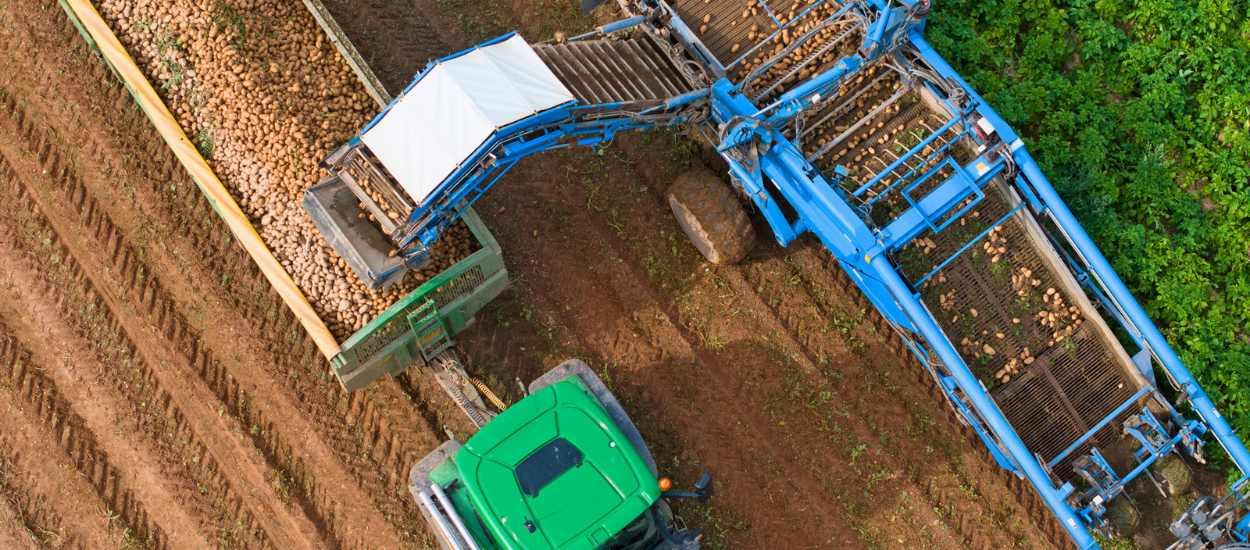The rhythm of the harvest sets the stage for timely purchasing

Harvest seasons set the stage for purchasing
For most ingredients, planning begins long before the product arrives in the warehouse.
When ingredients depend on natural cycles such as harvest and climate, timely purchasing is not just about commercial conditions – it's also about overview and availability. The timing of harvest, processing and availability sets the stage for when it is possible to trade and when the market typically tightens.
Harvest and sourcing – examples from different product groups
There is a big difference in when it is ideal to source an ingredient, as this is closely linked to the harvest cycle, geography and subsequent processing. At the same time, many ingredients are not agricultural products themselves, but derived raw materials from industrial processes and side streams, where dependence on harvest is often more indirect – but still significant.
Examples include:
- Cereals and seeds
Barley, wheat, rye and oats are typically harvested in August to September in Northern Europe and then processed. Ingredients related to these – such as fibre – should be purchased from September to November, when quality and quantity are more stable.
- Starches
Starches are typically produced from wheat, corn, potatoes and waxy corn, all of which are harvested from August to October. This also applies to dextrose and glucose, for example. The best time to trade is often right after harvest, when volume, quality and price begin to take shape.
- Proteins
Pea protein and wheat protein follow the same cycle as the underlying crops (typically August to October) and should be assessed for sourcing from September onwards – especially when global demand comes into play.
- Dried fruit
Raisins, apricots and similar dried fruits are harvested from July to October, depending on geography. Purchasing should take place from late summer to autumn, before export pressure and weather conditions set in.
- Sweeteners
Cane sugar and beet sugar are harvested from October to April and September to November, respectively, depending on climate and geography. Both types are affected by weather, yield and demand in other industries. Purchasing is recommended from autumn onwards, when the market picture is clearer.
- Nuts and seeds
Walnuts, hazelnuts, sunflower seeds and pumpkin seeds are harvested in September to November. Although they are often stored, weather, exports and logistics affect actual availability. Purchasing is recommended from October onwards.
The variation above shows that strategic purchasing requires an understanding of both the direct and indirect rhythms of the market.
When few players determine availability
For some ingredients, there are only a few large producers globally. Here, harvesting remains an important factor, but the biggest challenge is often ensuring access to the desired quantities in the right quality. This rarely happens by waiting for the market to bottom out.
Long-term partnerships are necessary to achieve security of supply and access, especially in a market characterised by concentration and fluctuating capacity.
Not all ingredients depend on harvest
Some ingredients are not seasonal and therefore require a different approach in terms of planning:
- Functional ingredients
Flavours, cultures and stabilisers are typically industrially produced and available year-round. Here, purchasing and planning depend primarily on:- Forecasts and demand
- Production capacity
- Logistics and supply chain
- Commodities
Ingredients such as salt and gelatine are produced continuously, but:- Can still be affected by global movements
- Require an overview of stocks and market trends
Planning for these product groups is not about harvest seasons – it's about knowing the market and staying ahead of logistics.
The harvest provides guidance – but the market decides
Planning based on harvests and annual purchasing windows provides an important overview, but is never enough on its own.
Conditions change quickly, and the weather can affect yields, export restrictions can arise, and energy prices or changing demand can create sudden imbalances in the market.
That is why we use harvest calendars as benchmarks – but not as definitive answers.
The actual purchasing decision must always be based on up-to-date knowledge of how the market is moving right now.
This requires insight close to the source. That is why we continuously draw on our partner network, where specialists are at the forefront and see trends before they take hold. This allows us to share valid assessments with you – even when the picture is complex and there is no single correct answer.
Contact us for advice and product information – get in touch using the form:
Receive insights every month
Receive the 3 to 5 most important news and recommendations from us - sign up here.
